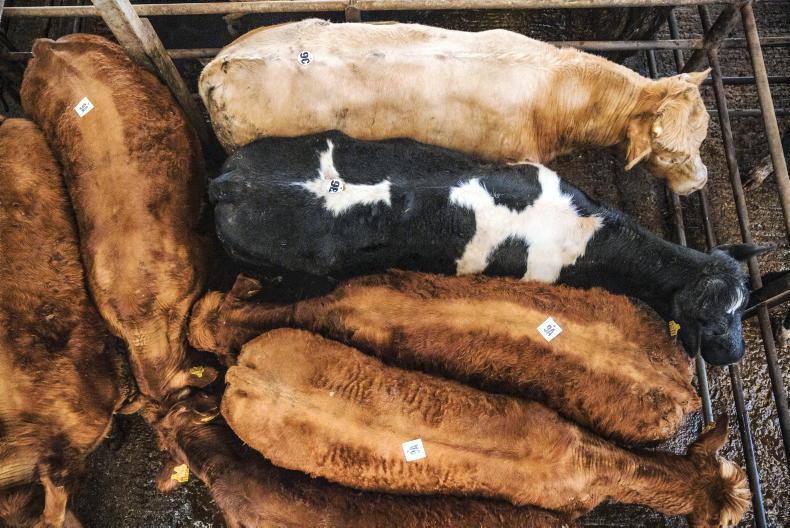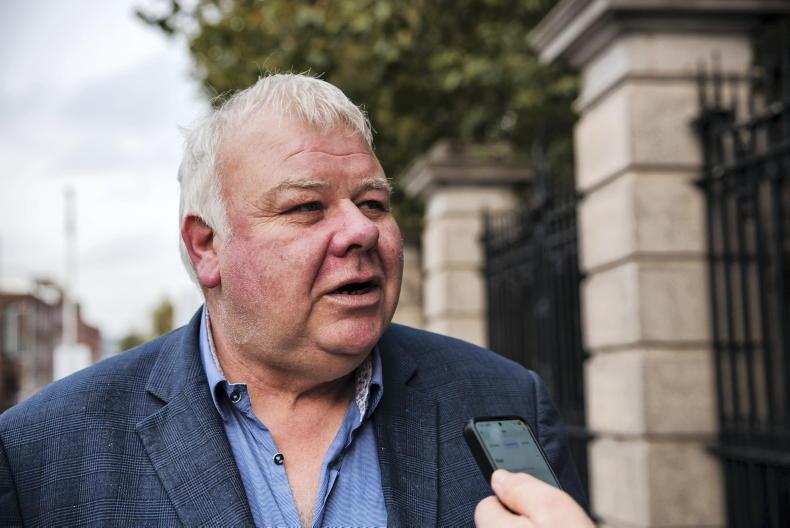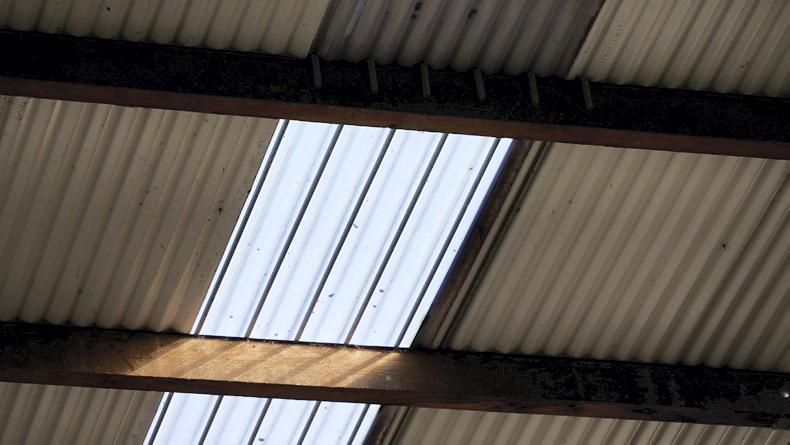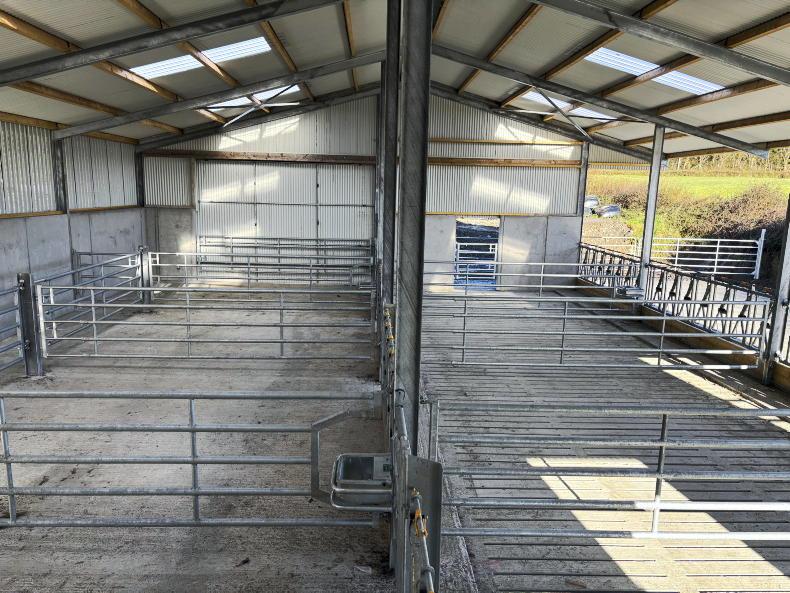There is likely to be a €10,000 higher investment ceiling in place in the new On-Farm Capital Investment Scheme, which replaces the current Targeted Agricultural Modernisation Scheme (TAMS) in the CAP Strategic Plan 2023-2027.
The higher investment ceiling of €90,000 for individual applications is just one of a range of proposed details included in the latest draft of Ireland’s CAP Strategic Plan consultation document, which was released on Monday night.
While the overall workings of the scheme will operate in a similar manner to TAMS with regards a tranche application system and a number of entry routes, there are a number of significant changes around the level of grant aid available and the range of items eligible with dairy equipment appearing to be omitted.
Key environmental objectives
These changes are stemming from a greater focus on addressing key environmental objectives with a higher rate of grant aid of 50% proposed for specific investments that are not linked to an increase in production, but that are viewed as providing clear benefits to water quality, emissions and the environment.
Nutrient storage facilities are also emphasised along with low-emission slurry spreading equipment and precision farming equipment
These include investments in precision grass measurement, rainwater harvesting and storage, solar panels, heat recovery units, heat pumps, biomass boilers, ventilation and insulation and covers for slurry stores.
Nutrient storage facilities are also emphasised along with low-emission slurry spreading equipment and precision farming equipment, such as low disturbance tillage equipment.
It is pointed out that some of these investments will also contribute to the wider renewable energy policy.
It is also clearly emphasised in the document that a higher rate of subsidy is proposed as being made available to organic farmers to encourage greater investment in the organic farming sector. This, the document says, will inadvertently encourage greater protection of natural resources.
The areas prioritised for investment in the current proposal are based on four different grant rates as outlined below.
1
General farm investments
This is the standard level of grant aid leaving aside the priority areas outlined above for higher levels of grant aid. Support under this category will include aid for animal welfare, nutrient storage and tillage and dairy farming. Grant aid will be set at 40% with a suggested investment ceiling of €90,000 per holding.
Applications from registered farm partnerships will continue to work to an investment ceiling of €160,000, while there is a possibility that a higher investment ceiling of €200,000 will be available for certain animal welfare-related projects in the pig and poultry sectors.
2
Young farmers and women farmers
As recently announced, women farmers will now be eligible to receive 60% grant aid, similar to young farmers, for investments up to a ceiling limit of €90,000, while there is also a €160,000 limit for registered farm partnership applications.
The proposed age limit for women applications to receive the higher rate of grant aid is set as 55 but the document states that this has to be confirmed.
Women must also meet the conditions for being “head of the holding” and meet the requirements for the appropriate training and/or skills required.
3
Organic farming/health and safety equipment /investments delivering specific environmental benefits
As touched on already, grant aid of 50% will be available for investments falling under these three headings. The individual investment ceiling limit is also €90,000 for individual applications and €160,000 for partnership applications.
Farm safety items will include investments such as replacement slats and safety rails/fences, solid covers for slurry stores, livestock handling facilities, crushes and enclosures and associated works, calving and isolation facilities, aeration systems and some upgrading works including rewiring. Examples of the non-productive investment items are already listed earlier in the article.
4
Low-emission slurry spreading equipment
The proposal is to have a higher grant aid rate of 50% for LESS attachments and a 40% grant rate for a mobile tanker and umbilical pump, reels and pipes. There is a separate investment ceiling of €40,000, which is not subject to the overall investment ceiling of €90,000. In the case of applications by two or more eligible partners, the maximum investment ceiling is €160,000. The consultation document states that operating a separate ceiling for LESS equipment will encourage more farmers to avail of funding in this area.
It says LESS technology will reduce ammonia emissions, encourage better management of nutrients and a reduction in chemical fertiliser and pesticide use and contribute to improved biodiversity.
Funding of LESS equipment will continue to be subject to nitrates derogation regulations in relation to mandatory actions not being eligible to receive grant aid meaning farmers stocked at in excess of 170kg organic nitrogen per hectare (before exports of organic fertilisers) will not be eligible to receive grant aid.
The total funding allocated for the period from 2021 to 2027 is €440m. Within this, €340m is being funded from the transitional Rural Development Plan fund for 2021 to 2025, with the remaining €100m assigned under the new CAP Strategic Plan to support new on-farm investment in 2026 and 2027.
It is envisaged that in the region of 20,000 investments will receive grant aid with the average payment predicted at €5,055 per investment
The document goes in to detail on how the €100m in allocated funding may be spent in 2026 and 2027.
It is envisaged that in the region of 20,000 investments will receive grant aid with the average payment predicted at €5,055 per investment going on the experience of TAMS where €264.4m was allocated to 52,305 investments up to the end of 2020.
Within this 20,000 figure, it is expected that there will be 8,500 investments of less than €5,000 in grant aid, 7,500 between €5,000 and €20,000 and 4,000 investments of in excess of €20,000.
Dairy
The dairy equipment scheme category is no longer included and there is also expected to be a lower uptake of LESS equipment given the significant number of farmers who are now ineligible and relatively positive uptake levels to date.
It is expected, however, that this will not reduce the number of applications with a substitution from a greater number of animal welfare investments.
The scheme is demand-led and, as such, the allocation put forward annually is likely to vary year to year depending on the size and scale of projects receiving funding.
It will operate on a tranche system with ranking and selection criteria used to prioritise applications.
Applications will be made through the following headings:
Environmental investments. Animal welfare. Nutrient storage. Tillage farmers. Young farmers. Women farmers.Organics.Farm safety.To expand on the earlier category listing support under the general investments category will include aid under the areas of animal welfare, nutrient storage and tillage and dairy farming.
The document states support for improving animal welfare will be provided for investments in the modernisation of animal housing facilities and the construction of new animal housing on Irish farms.
The upgrading of existing pig and poultry feeding systems is highlighted as allowing for the targeted provision of medicated feed or water
This is seen to give rise to healthier animals reducing the need for antimicrobial treatment.
The upgrading of existing pig and poultry feeding systems is highlighted as allowing for the targeted provision of medicated feed or water, thereby avoiding unnecessary treatments and reducing the risk of antimicrobial resistance.
Support for nutrient storage will be provided for investments in the construction of farm nutrient storage facilities on farms.
While support for the tillage and dairy sectors will be provided for investments in precision farming equipment and in the case of the tillage sector also for low disturbance tillage equipment.
The use of precision farming equipment and low disturbance tillage equipment by tillage farmers is seen to underpin efficiency gains and reduced use of inputs of energy
The latter is said to be in line with Ag Climatise and reflects the particular emphasis, which it says will be placed on supporting the tillage sector.
The use of precision farming equipment and low disturbance tillage equipment by tillage farmers is seen to underpin efficiency gains and reduced use of inputs of energy, labour and machinery in the short and long term and fertiliser, water and pesticides in the medium and long term.
The document says fertiliser and pesticide management will also be more efficient through support for precision GPS, spraying and yield-monitoring equipment.
There is likely to be a €10,000 higher investment ceiling in place in the new On-Farm Capital Investment Scheme, which replaces the current Targeted Agricultural Modernisation Scheme (TAMS) in the CAP Strategic Plan 2023-2027.
The higher investment ceiling of €90,000 for individual applications is just one of a range of proposed details included in the latest draft of Ireland’s CAP Strategic Plan consultation document, which was released on Monday night.
While the overall workings of the scheme will operate in a similar manner to TAMS with regards a tranche application system and a number of entry routes, there are a number of significant changes around the level of grant aid available and the range of items eligible with dairy equipment appearing to be omitted.
Key environmental objectives
These changes are stemming from a greater focus on addressing key environmental objectives with a higher rate of grant aid of 50% proposed for specific investments that are not linked to an increase in production, but that are viewed as providing clear benefits to water quality, emissions and the environment.
Nutrient storage facilities are also emphasised along with low-emission slurry spreading equipment and precision farming equipment
These include investments in precision grass measurement, rainwater harvesting and storage, solar panels, heat recovery units, heat pumps, biomass boilers, ventilation and insulation and covers for slurry stores.
Nutrient storage facilities are also emphasised along with low-emission slurry spreading equipment and precision farming equipment, such as low disturbance tillage equipment.
It is pointed out that some of these investments will also contribute to the wider renewable energy policy.
It is also clearly emphasised in the document that a higher rate of subsidy is proposed as being made available to organic farmers to encourage greater investment in the organic farming sector. This, the document says, will inadvertently encourage greater protection of natural resources.
The areas prioritised for investment in the current proposal are based on four different grant rates as outlined below.
1
General farm investments
This is the standard level of grant aid leaving aside the priority areas outlined above for higher levels of grant aid. Support under this category will include aid for animal welfare, nutrient storage and tillage and dairy farming. Grant aid will be set at 40% with a suggested investment ceiling of €90,000 per holding.
Applications from registered farm partnerships will continue to work to an investment ceiling of €160,000, while there is a possibility that a higher investment ceiling of €200,000 will be available for certain animal welfare-related projects in the pig and poultry sectors.
2
Young farmers and women farmers
As recently announced, women farmers will now be eligible to receive 60% grant aid, similar to young farmers, for investments up to a ceiling limit of €90,000, while there is also a €160,000 limit for registered farm partnership applications.
The proposed age limit for women applications to receive the higher rate of grant aid is set as 55 but the document states that this has to be confirmed.
Women must also meet the conditions for being “head of the holding” and meet the requirements for the appropriate training and/or skills required.
3
Organic farming/health and safety equipment /investments delivering specific environmental benefits
As touched on already, grant aid of 50% will be available for investments falling under these three headings. The individual investment ceiling limit is also €90,000 for individual applications and €160,000 for partnership applications.
Farm safety items will include investments such as replacement slats and safety rails/fences, solid covers for slurry stores, livestock handling facilities, crushes and enclosures and associated works, calving and isolation facilities, aeration systems and some upgrading works including rewiring. Examples of the non-productive investment items are already listed earlier in the article.
4
Low-emission slurry spreading equipment
The proposal is to have a higher grant aid rate of 50% for LESS attachments and a 40% grant rate for a mobile tanker and umbilical pump, reels and pipes. There is a separate investment ceiling of €40,000, which is not subject to the overall investment ceiling of €90,000. In the case of applications by two or more eligible partners, the maximum investment ceiling is €160,000. The consultation document states that operating a separate ceiling for LESS equipment will encourage more farmers to avail of funding in this area.
It says LESS technology will reduce ammonia emissions, encourage better management of nutrients and a reduction in chemical fertiliser and pesticide use and contribute to improved biodiversity.
Funding of LESS equipment will continue to be subject to nitrates derogation regulations in relation to mandatory actions not being eligible to receive grant aid meaning farmers stocked at in excess of 170kg organic nitrogen per hectare (before exports of organic fertilisers) will not be eligible to receive grant aid.
The total funding allocated for the period from 2021 to 2027 is €440m. Within this, €340m is being funded from the transitional Rural Development Plan fund for 2021 to 2025, with the remaining €100m assigned under the new CAP Strategic Plan to support new on-farm investment in 2026 and 2027.
It is envisaged that in the region of 20,000 investments will receive grant aid with the average payment predicted at €5,055 per investment
The document goes in to detail on how the €100m in allocated funding may be spent in 2026 and 2027.
It is envisaged that in the region of 20,000 investments will receive grant aid with the average payment predicted at €5,055 per investment going on the experience of TAMS where €264.4m was allocated to 52,305 investments up to the end of 2020.
Within this 20,000 figure, it is expected that there will be 8,500 investments of less than €5,000 in grant aid, 7,500 between €5,000 and €20,000 and 4,000 investments of in excess of €20,000.
Dairy
The dairy equipment scheme category is no longer included and there is also expected to be a lower uptake of LESS equipment given the significant number of farmers who are now ineligible and relatively positive uptake levels to date.
It is expected, however, that this will not reduce the number of applications with a substitution from a greater number of animal welfare investments.
The scheme is demand-led and, as such, the allocation put forward annually is likely to vary year to year depending on the size and scale of projects receiving funding.
It will operate on a tranche system with ranking and selection criteria used to prioritise applications.
Applications will be made through the following headings:
Environmental investments. Animal welfare. Nutrient storage. Tillage farmers. Young farmers. Women farmers.Organics.Farm safety.To expand on the earlier category listing support under the general investments category will include aid under the areas of animal welfare, nutrient storage and tillage and dairy farming.
The document states support for improving animal welfare will be provided for investments in the modernisation of animal housing facilities and the construction of new animal housing on Irish farms.
The upgrading of existing pig and poultry feeding systems is highlighted as allowing for the targeted provision of medicated feed or water
This is seen to give rise to healthier animals reducing the need for antimicrobial treatment.
The upgrading of existing pig and poultry feeding systems is highlighted as allowing for the targeted provision of medicated feed or water, thereby avoiding unnecessary treatments and reducing the risk of antimicrobial resistance.
Support for nutrient storage will be provided for investments in the construction of farm nutrient storage facilities on farms.
While support for the tillage and dairy sectors will be provided for investments in precision farming equipment and in the case of the tillage sector also for low disturbance tillage equipment.
The use of precision farming equipment and low disturbance tillage equipment by tillage farmers is seen to underpin efficiency gains and reduced use of inputs of energy
The latter is said to be in line with Ag Climatise and reflects the particular emphasis, which it says will be placed on supporting the tillage sector.
The use of precision farming equipment and low disturbance tillage equipment by tillage farmers is seen to underpin efficiency gains and reduced use of inputs of energy, labour and machinery in the short and long term and fertiliser, water and pesticides in the medium and long term.
The document says fertiliser and pesticide management will also be more efficient through support for precision GPS, spraying and yield-monitoring equipment.










SHARING OPTIONS